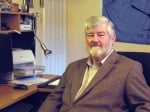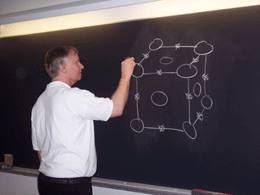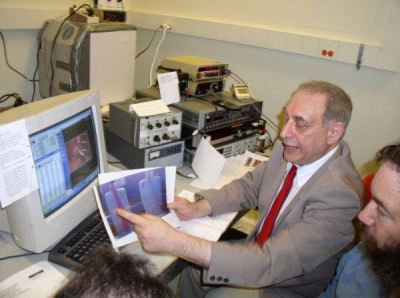 The following is a further posting in a series of articles by David French, a patent attorney with 35 years experience, which will review patents of interest touching on the field of Cold Fusion.
The following is a further posting in a series of articles by David French, a patent attorney with 35 years experience, which will review patents of interest touching on the field of Cold Fusion.
November 21, 2011 –The National Aeronautics and Space Administration – NASA has taken the initiative to file a patent application at the US Patent Office relating to Cold Fusion. This application was filed in Washington on March 24, 2011 claiming priority from an earlier U.S. Provisional Patent Application filed March 25, 2010. Publication of this application occurred in pursuance of the standard rule that applications are laid open for public examination as of 18 months from their earliest priority/filing date. This rule does not always apply. The Patent Office can, if an invention relates to defense or matters of national interest, withhold applications from publication in the normal course.
Viewing the patent application
The US publication number is 20110255645 and the application can be viewed at the following link (here). A TIFF reader is required to view the images. TIFF software can be downloaded from the US PTO Images webpage. Alternately, the publication number can be transferred to www.patent2PDF.com where a PDF image with the drawings can be downloaded.
The sole named inventor on this application is Joseph (Joe) M Zawodny. Googling this name leads to this link, (here).
and this link, a review of a book on Amazon.com (here)
and this link, on PeakYou (here).
I will let the readers chase-down other biographic information on this inventor.
The title of the patent application is: “Method for Producing Heavy Electrons” and the Abstract reads as follows:
“A method for producing heavy electrons is based on a material system that includes an electrically-conductive material is selected. The material system has a resonant frequency associated therewith for a given operational environment. A structure is formed that includes a non-electrically-conductive material and the material system. The structure incorporates the electrically-conductive material at least at a surface thereof. The geometry of the structure supports propagation of surface plasmon polaritons at a selected frequency that is approximately equal to the resonant frequency of the material system. As a result, heavy electrons are produced at the electrically-conductive material as the surface plasmon polaritons propagate along the structure. ”
More significant is claim 1 which is the 1st of 3 independent claims (the others being claims 12 and 19). Claim 1 is analyzed in detail further below.
One Key Requirement for validity
For this claim to be valid, it must not describe or “read-on” anything that was available in a printed publication anywhere in the world prior to March 25, 2009. Further, it must not describe any public use or offer for sale occurring in the United States prior to that date.
In this respect, this application explicitly acknowledges in paragraph [0006] that the theory of Widom and Larsen that “heavy electrons” have been linked to LENR activity. This is described in the application as follows:
“Briefly, this theory put forth by Widom and Larsen states that the initiation of LENR activity is due to the coupling of “surface plasmon polaritons” (SPPs) to a proton or deuteron resonance in the lattice of a metal hydride. The theory goes on to describe the production of heavy electrons that undergo electron capture by a proton. This activity produces a neutron that is subsequently captured by a nearby atom transmuting it into a new element and releasing positive net energy in the process.”
Readers should appreciate that statements made in patent applications and issued patents are not necessarily true.
The patent application acknowledges the article by A. Widom et al. “Ultra Low Momentum Neutron Catalyzed Nuclear Reactions on Metallic Hydride Surface,” European Physical Journal C-Particles and Fields, 46, pp. 107-112, 2006, and U.S. Pat. No. 7,893,414 issued to Larsen et al, published September 15, 2007, as being prior art which cannot be covered by a claim in the present application. The application goes on to premise that, as of the priority date, heavy electron production has only occurred in small random regions or patches of sample materials/devices, limiting the capacity of this phenomenon to support a device in an efficient energy generation application.
This inventor himself premises the legitimacy of LENR as a potential source of energy generation. The fact that NASA has supported this application by paying for the patent filing provides further modest endorsement of this premise, at least as a prospective possibility. But this filing does not commit the US government to acknowledge that LENR is a significant phenomenon of great potential importance. This initiative may merely be the whim of a NASA supervisor.
Classification of invention
This application has been assigned to US patent class 376/108. A link to this class including further links to other applications and patents in the same class and subclass may be found (here).
Highlighting and clicking on the description of the sub-class on this page will lead to a class definition. That class definition includes systems which aspire to achieve nuclear fusion in the most general sense of yielding, after a reaction, a nucleus of greater mass, whether successful or not. It includes cases where neutrons are used to cause a fission reaction.
Classification in this subclass does not necessarily define what is really happening. It is really just a 1st guess and it is further subject to the possibility/likelihood that the subclasses in this classification system are not fully up to date with latest developments.
From the link to US patent class 376/108 further hyperlinks to pending patent applications and issued US patents in the same subclass may be effected by activating the links “A” and “P“.
Claim 1
A better understanding of claim 1 can be achieved by parsing it as follows:
1. A method of producing heavy electrons, comprising the steps of:
selecting a material system that includes an electrically-conductive material, said material system having a resonant frequency associated therewith for a given operational environment; and
forming a structure having a surface, said structure comprising a non-electrically-conductive material and said material system, said structure incorporating said electrically-conductive material at least at said surface of said structure,
wherein a geometry of said structure supports propagation of surface plasmon polaritons at a selected frequency that is approximately equal to said resonant frequency of said material system, and producing heavy electrons at said electrically-conductive material as said surface plasmon polaritons propagate along said structure.
This claim is very broad and may have to be narrowed to achieve the approval of the US examiner. The applicant must not only establish that the claim qualifies as covering only to novel, nonobvious, methods in view of what was before March 25, 2009, but also the examiner must be satisfied that the disclosure is free of uncertainties and contains sufficient information to enable the replication of the invention once the patent expires. This application may be vulnerable on both counts.
This could turn out to be a remarkably broad claim if it is upheld. Readers may be able to supply examples of prior art that fall within its scope. Regarding uncertainty, the meaning of this claim will depend upon understanding what is meant by the word “propagation”, as in the phrase “supports propagation”. This could mean increasing in quantity, or advancing in space. Contrast: a propagation of new species (after a massive extinction) versus propagating in space (radio waves). The 2nd use of propagation at the end of the claim is in the latter sense. In the circumstances, we may look to the general “story” of the disclosure to clarify the meaning of words used in a claim. We must also examine the disclosure to determine if it is “enabling”.
Disclosure of the invention
The Summary of the Invention portion of the disclosure is clearly written by a patent attorney. The rich use of “may” rather than “is” is a clear indication of this conclusion. Attorneys never wish to commit themselves if they can avoid it. The 1st paragraph in this section also contains some strange passages:
“The structure may include a solid matrix material with the electrically-conductive material mixed therein. The structure may exist in a state selected from the group consisting of a gas, a liquid, and a plasma. The electrically-conductive material may be mixed in the structure.”
To suggest that the structure can exist in the state of being a gas, liquid or a plasma seems to stretch the word “structure” too far. But patents are to be read with a mind willing to understand.
Detailed description
The Detailed Description of the Invention portion of the disclosure is more often associated with the words of the inventor. In this section we nevertheless find text which is entirely predictive with no examples. This portion of the disclosure is supposed to enable others to build and operate the invention. In this case, the instructions are tied-to or expressed in terms of achieving the object of the exercise. This is generally not considered to be sufficient to meet disclosure and enablement requirements. Sample paragraphs that are somewhat indefinite are as follows:
“[0021] ….In general, device 10 includes a selected material system 12 that is incorporated onto/into a tuned structure 14 that supports propagation of SPPs and resulting heavy electron production that is sustained by device 10 across and/or through the entirety thereof.
[0022]….device 10 is made in such a way that it will establish a resonance in a SPP (e.g., via its inherent thermal energy for a given working environment, or via the application of energy to initiate SPP resonance) at a small region or portion of device 10.
[0023]….Regardless of the application, material system 12 will have a resonant frequency associated therewith for the working or operating environment of the application. Determination of this resonant frequency can be achieved by experimentation as would be understood in the art. For example, the resonant frequency for metal hydride systems can be measured using neutron scattering. The resonant frequency for molecules (e.g., molecular films such as polycyclic aromatic hydrocarbons or PAHs, hydrogenated/deuterated molecular structures such as graphane and its nanotube variants) can be determined for specific vibrational or rotational modes using spectroscopy. [Comment: earlier, it was suggested that resonance was to be formed in particles. Why is resonance within molecules relevant? Is there a distinction between the resonant response of a material system and the resonant response of “heavy electrons?]
[0025] With material system 12 being so-selected and its resonant frequency for a working environment being determined/known, tuned structure 14 incorporating material system 12 is formed. In accordance with the present invention, this is achieved by making the geometry of structure 14/material system 12 such that the SPP resonance thereof is established (i.e., either by inherent thermal energy of device 10 or application of energy thereto that initiates SPP resonance) at a frequency (i.e., the SPP resonant frequency) that is approximately equal to the above-described resonant frequency of material system 12.
Apparently, this text assumes that the geometry of structure 14/material system 12 can be chosen so that the displacement of surface plasmon polaritons – SPPs (also described as “heavy electrons”, but not otherwise defined) along the surfaces of the particles of structure can be pumped in their translational motion by applying energy intermittently from an external source, necessarily in synchronization with the presumed reversing travel of SPPs within the particles. Since the disclosure premises that an external source can be: “a form of energy selected from the group consisting of electric energy, thermal energy, photonic energy, energy associated with an ion beam, and energy associated with a flow of gas” para [0007], there is a presumption that each of these energy sources can be modulated appropriately and will couple with the heavy electrons increasing their energy content or, presumably, their effective mass.
The objective of “propagating” the existence of “heavy electrons” is said to have utility because of their prospective role in:
“coupling…… to a proton or deuteron resonance in the lattice of a metal hydride (and) … undergo electron capture by a proton. This activity produces a neutron that is subsequently captured by a nearby atom transmuting it into a new element and releasing positive net energy in the process” (para [0006]).
Accordingly, this patent does not represent that it is establishing a process for producing energy based on an LENR or Cold Fusion process that arises from the formation and absorption of neutrons. Rather, it accepts such process as a given and presumes to provide a method for enhancing the efficiency of neutron production.
Overall, the specification is speculative and suspect for lacking any data on actual procedures that have been carried out to successfully produce the results promised.
Results promised
And the disclosure runs the dangerous risk of making excessive promises:
“The present invention allows an entire device surface or volume to produce heavy electrons as opposed such production in small random regions of materials/devices. Thus, devices/systems constructed in accordance with the present invention will have performance that is predictable and maximize heavy electron production that results in, for example, maximum energy production for a given device/system or predictable efficiency and effectiveness of a gamma ray shield.” [0007]
It’s better not to make promises as to the degree of performance that can be achieved from the invention since, if such promises do not deliver, this is a grounds for questioning the validity of a patent.
Conclusion
In conclusion, this application seems to be as much the creation of a patent attorney who has received the advice that the resonant excitation of “heavy electrons” will improve their “propagation”. It will be interesting to see how the examiner reacts when this filing is reviewed in 2 or 3 years.
Postscript: Apparently, no corresponding application was filed either under the Patent Cooperation Treaty or before the Canadian Patent Office. This indicates that the relative importance thought to be associated with the patent filing by those paying the bill is modest.
Persons wishing to make comments on this posting are invited to visit the Cold Fusion Now website where this article is posted.



